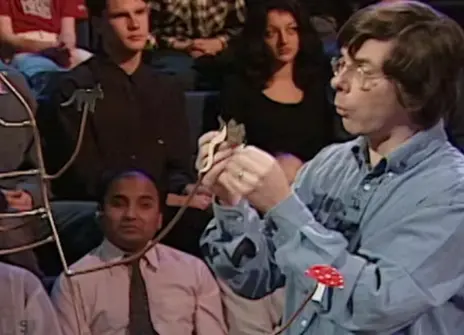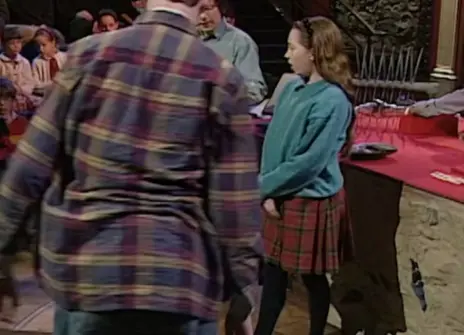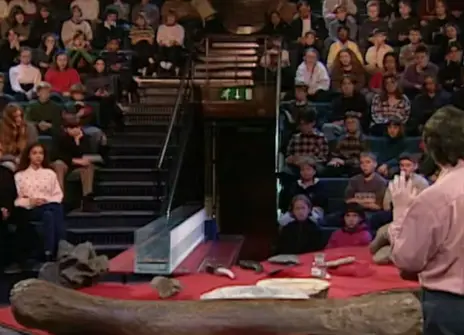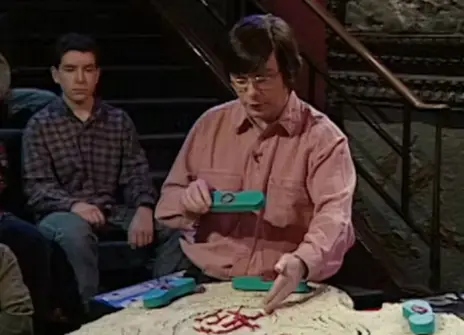Lecture 3 – The great dyings: Life after death
In this CHRISTMAS LECTURE, palaeontologist Conway Morris explains how a meteorite caused the 1908 Tunguska event in Siberia and its aftermath. He goes on to demonstrate what would happen if a meteorite hit London or the Atlantic Ocean.
Through fossils, bones and demonstrations he explains how a meteorite crashing to earth caused the extinction of dinosaurs, leading the way for modern-day mammals.
About the 1996 CHRISTMAS LECTURES
Palaeontologist Simon Conway Morris delivers five lectures on the important role fossils and bones play in helping us understand the past.
In this set of engaging lectures and demonstrations from Conway Morris, he explains how fossils' markings have helped humans piece together the history of the planet.
There's an exploration of pre-historic creatures and dinosaurs including what caused their extinction. As well as a look at how life and mammals developed after this time and how we can trace our ancestry back more than 3 billion years.





